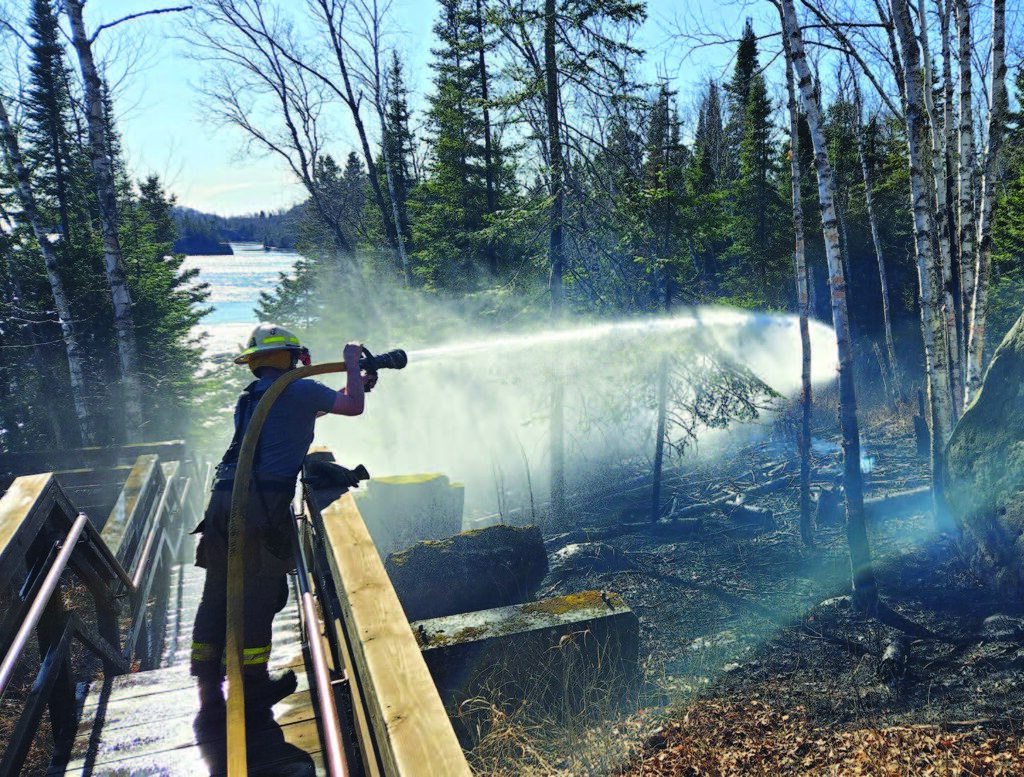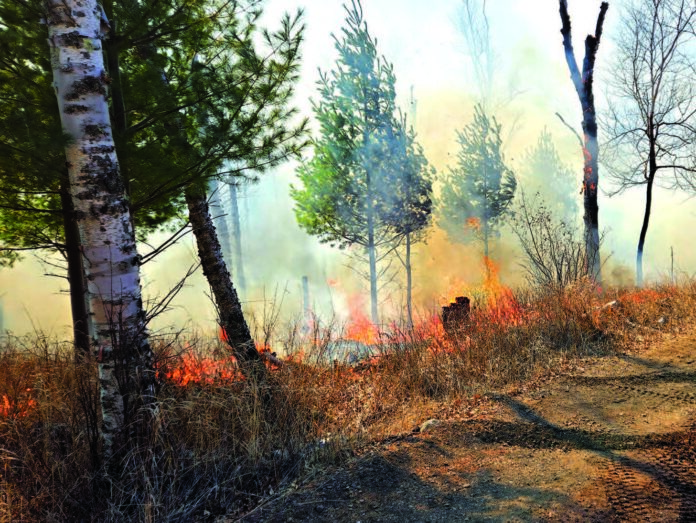A wildfire was reported on the afternoon of Tuesday, March 12, near the historic Split Rock Lighthouse. The fire was spotted near the Tram building staircase and burned toward Lake Superior.
Fire crews from Minnesota DNR, aided by the Lake County Sheriff’s Office and the Silver Bay Fire Department, responded and contained the blaze after it burned a little over an acre. No structures were reported damaged or lost. Park personnel evacuated visitors from the lighthouse facilities, but they were open again the next day.

A helicopter was called in to retrieve water from Lake Superior to drop on the fire. When it landed to refuel, DNR firefighters spotted an unauthorized drone flying where they were working, operated by a private party. The DNR helicopter remained grounded until firefighters confirmed the drone was no longer in the air.
“We are fortunate this time the drone was spotted before it collided with the helicopter,” said Darren Neuman, Aviation Manager with the Minnesota Department of Natural Resources. “Drone incursions are completely avoidable safety hazards that threaten the lives of everyone responding to the fire and nearby.”
Smoke-filled air limits visibility for firefighters and aircraft pilots. Unauthorized drones are unnecessary distractions in this often hectic environment and are prohibited by law.
When a drone is spotted near a wildfire, all responding aircraft must land or return to the airport until the airspace is clear, delaying critical firefighting efforts.
According to the DNR, the cause of the Split Rock fire remains under investigation at press time.
Leann Langenberg, Public Information Officer with the Minnesota Incident Command System (MNICS), said, “According to the DNR, 90% of wildfires are man-caused.”
MNICS is an interagency group of local, state, and federal partners cooperating to manage wildfires and all risky incidents. It develops standard procedures, practices, and guidelines for incident response and resource mobilization. MNICS was established to enhance emergency response resources for land management agencies in Minnesota, disseminate intelligence information, and provide a single point of contact for the cooperating agencies within the state.
In a February MNICS report from Travis Verdegan, Predictive Services Coordinator for the DNR Division of Forestry, Minnesota has a pronounced spring fire season that typically peaks in April and May. It started four to six weeks early this year. On March 10, Verdegan’s report said there were a record-setting 34 fires on that day.
Due to the lack of snow, relatively warm temperatures, and many days with high winds, the fire danger is extremely high on the North Shore. Verdegan’s report states, “Trends of recent years have favored an extended fire season into June.”
For current fire activity and fire restrictions in Minnesota, visit the MNICS website at www.mnics.org.






